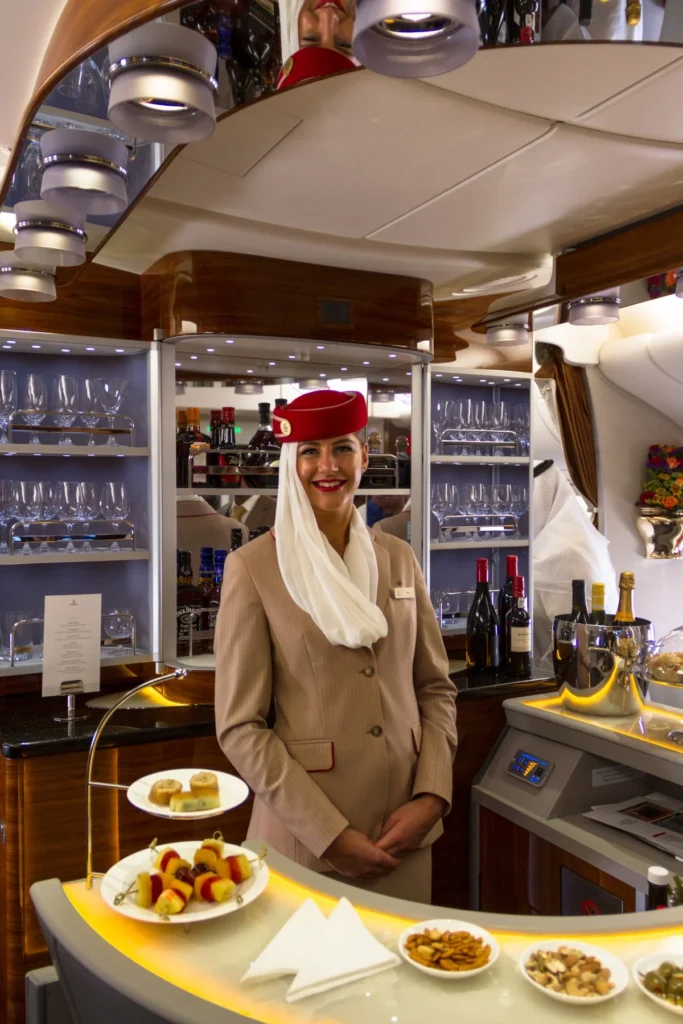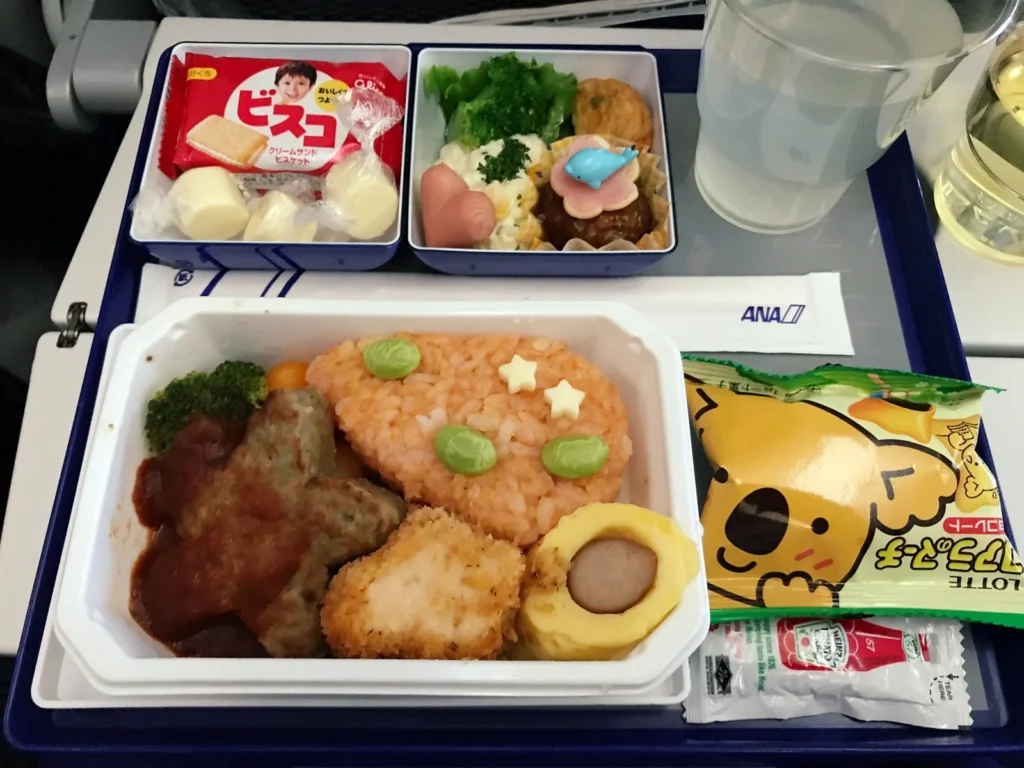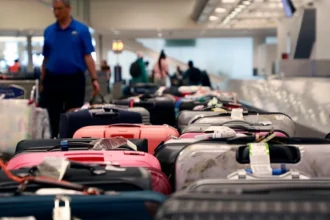For most travelers, hopping on a plane is an exciting part of any adventure. But for millions of people living with food allergies — or caring for children who do — air travel can feel like navigating a minefield.
Fear of hidden allergens, accidental exposure, and uncertainty about airline policies can make flying feel overwhelming.
But here’s the good news: with the right preparation and knowledge, you can absolutely travel safely and confidently. Let’s break down the concerns, solutions, and insider tips that will help you fly with ease.

Why Food Allergies and Air Travel Feel Risky
Food allergies vary in severity, but for some people, even trace amounts of allergens like peanuts, tree nuts, shellfish, or dairy can trigger serious reactions — including anaphylaxis, a life-threatening condition.
Understandably, this makes the idea of eating on a plane — or even being near certain foods — nerve-wracking. But how common are in-flight reactions, really?
A 2023 review across 17 international studies found that severe allergic reactions on planes are incredibly rare: roughly 7 out of 10 million passengers experience an allergic reaction inflight. Reactions requiring adrenaline were even rarer — about 8 in 100 million travelers.
So while the anxiety is real, the actual risk of a severe event is low — thanks in large part to the proactive measures many allergy-aware travelers already take.
What About Airborne Allergens?
Many worry that food particles floating in the cabin air could trigger a reaction. Thankfully, science reassures us:
HEPA air filters used in modern commercial aircraft capture 99.97% of airborne particles, including potential food proteins.
Studies simulating peanut exposure (shaking bags of peanuts, deshelling them) show airborne allergen levels stay low — and reactions from airborne particles alone are extremely unlikely.
The bigger risk comes from surface contamination (like smears on tray tables or armrests) or direct contact — not the air you’re breathing.
9 Life-Saving Tips for Safe Air Travel with Food Allergies
1. Always carry your medication: Your EpiPen, Anapen, or other auto-injector must go in your carry-on — not your checked luggage. Keep it within reach under the seat or in your pocket, not stashed overhead.
2. Pack an allergy action plan: Have a document signed by your doctor that outlines your allergy, what to do in an emergency, and the medication you carry. Give a copy to the crew.
3. Alert the airline early: Tell them about your food allergies when booking and again at check-in. Many carriers can note this in your reservation and may allow early boarding so you can wipe down your area.
4. Bring your own safe food: Never rely on airline meals to be allergen-free. Pack pre-approved snacks or meals. Double-check destination rules about fresh food.
5. Wipe surfaces thoroughly: Use wet wipes on your seat, tray table, armrest, and window area. Studies have found allergen residues on airplane surfaces even after cleaning.
6. Pick a smart seat: A window seat reduces exposure to passing food trays. Seating allergic children between trusted adults helps prevent accidental sharing.
7. Wash your hands: Wet wipes and soap work better than sanitizer for removing food proteins from hands.
8. Communicate with nearby passengers: A polite word can stop well-meaning neighbors from offering snacks that could pose a danger.
9. Know the signs of a reaction: Stay calm. If you feel symptoms, alert the crew immediately — they’re trained to assist.
Hidden Insights You Might Not Know

Airlines vary widely in allergy policies. Some (like Qantas, Air Canada) have well-publicized protocols, including buffer zones or peanut-free flights. Others leave it to crew discretion. Always check before you fly.
Crew allergy training isn’t universal. Not every airline trains staff on food allergies and anaphylaxis response, so it’s vital to be self-prepared.
Surface allergens linger. Peanut protein can survive standard cleaning, so those wet wipes really do make a difference!
International travel adds complexity. Some countries have stricter rules about carrying auto-injectors. Always check destination regulations and carry a doctor’s note.
Allergy organizations offer travel cards in multiple languages. These help you communicate dietary needs in foreign countries.
What Airlines Should Be Doing (And Some Already Are)
Airlines are slowly improving allergy policies thanks to advocacy from allergy support groups worldwide. Here’s what top practices look like:
Clear allergy policies published on websites
Early boarding options for cleaning seats
Option to request buffer zones (no nut service nearby)
Allergen-free snack alternatives
Crew trained in recognizing and managing anaphylaxis
Some airlines even allow you to submit a formal medical request form in advance — ask about this at booking.

Global Perspectives: How Different Countries Handle Allergy Safety
Australia & New Zealand: Airlines tend to be allergy-aware, with clear policies on nut service and medical kits.
United States: Policies vary widely — always check ahead. The FAA does not require airlines to accommodate food allergies, but many airlines will work with you.
Europe: Some airlines offer allergen-friendly snacks or let passengers pre-notify of allergies, but practices vary.
Asia: Policies can be less consistent. Always call ahead to check what support is available.
Bonus Tips for Stress-Free Travel
Carry two auto-injectors — one can fail or be insufficient.
Download allergy travel apps — they offer phrase translations and emergency contact info.
Ask about airline allergy policies via email so you have a written record.
Bring extra snacks in case of delays.
Final Thoughts
Flying with food allergies will always require caution, but it doesn’t have to mean constant worry. By understanding the true risks (lower than many fear), taking practical steps, and working with airlines and fellow passengers, you can travel the world — safely and with confidence.
So pack those wipes, plan ahead, and enjoy your journey!












